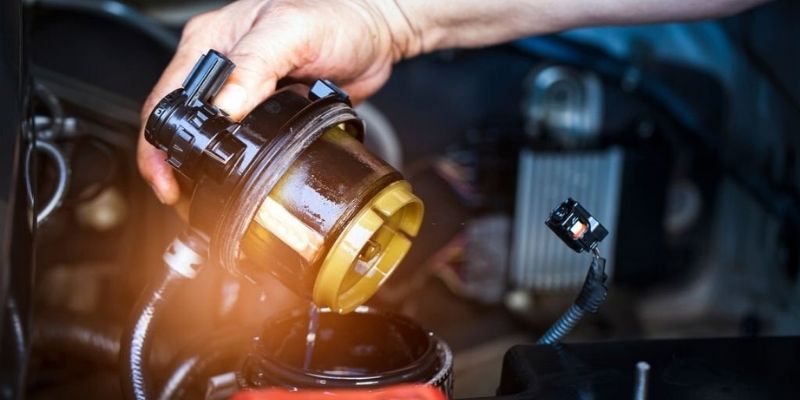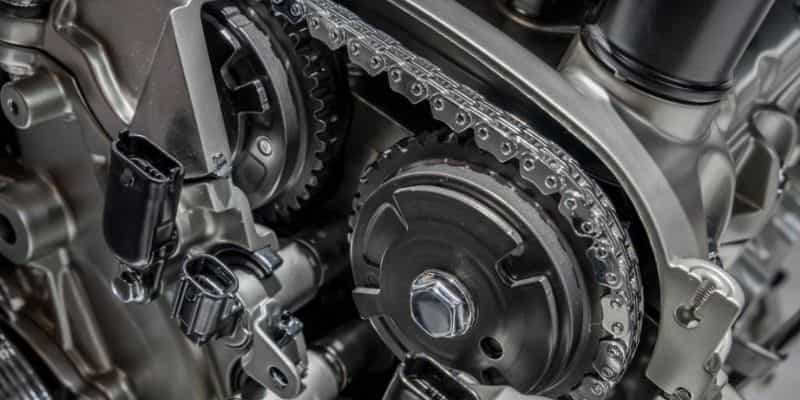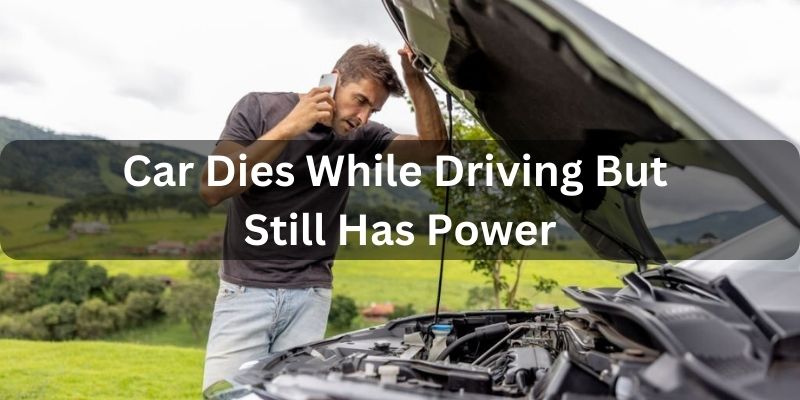If your car suddenly dies or shuts off while you’re driving but the electrical components like headlights and dashboard remain powered, it can be frightening and stressful.
This article will discuss the most common reasons why your car dies while driving but still has power, and provide solutions to fix the underlying issue. Understanding why your car dies but still has power can help you troubleshoot and get back on the road safely.
Some potential causes for a car stalling or shutting off while driving include a bad fuel pump, bad ignition coils or spark plugs, a clogged fuel filter, a broken or slipped timing belt, engine overheating, issues with the EGR valve, or problems with the camshaft sensor.
Let’s take a deeper look at some common reasons why your car may die while driving but still has electrical power, symptoms to watch for, and recommended repairs.
Causes when car dies while driving but still has power
There can be several causes behind a situation when a car dies while driving but still has power. One possible reason could be a faulty alternator.
The alternator is responsible for charging the battery while the engine is running, so if it malfunctions or fails, the battery can quickly lose its charge and cause your car to stall.
Another possibility could be a problem with the fuel system. Issues like a clogged fuel filter or a failing fuel pump can prevent the engine from receiving an adequate fuel supply, leading to a sudden shutdown.
Additionally, a malfunctioning ignition system, such as a faulty ignition coil or a problem with the spark plugs, can cause the engine to lose power and die while driving.
Other potential culprits could include a broken timing belt, a failing sensor, or an electrical issue such as a loose connection or a blown fuse.
In any case, it is essential to have the vehicle diagnosed and repaired by a qualified mechanic to determine the exact cause and prevent similar incidents in the future.
1. Faulty Mass Airflow Sensor
The mass airflow sensor (MAF) plays an important role in the car’s engine management system. It monitors the volume of air entering the engine. If the MAF sensor is faulty, it can cause incorrect fuel mixture readings.
This confuses the engine control unit (ECU) and the car stops running. Symptoms include rough engine idling, unstable RPM at a constant speed, sluggish acceleration, and the check engine light flashing on the dashboard. Replacing the MAF sensor is usually the fix when it malfunctions.
A faulty mass airflow sensor can cause unstable running and eventually cause car jerking due to improper fuel-air mixture readings. The MAF sensor monitors incoming air and relays that data to the ECU so it knows how much fuel is needed for optimal combustion.
When the MAF sensor gives inaccurate readings, the engine will run poorly and may shut off due to running too lean or rich. Check to see if the replacement of the MAF sensor resolves the stalling issue.
2. Faulty Fuel Pump
The fuel pump works hard to send gasoline from the gas tank to the engine at high pressure. Over time and mileage, fuel pumps can wear out and fail to deliver sufficient fuel for the engine’s needs.
Symptoms of a failing fuel pump include hard starting, rough idle, lack of power, and eventually the engine may shut off or stall while driving due to fuel starvation. Replacing a faulty fuel pump usually fixes the no-start or stalling problem.
A fuel pump is a critical component that must function properly to deliver gasoline to the engine. When underpowered or failing, it cannot supply an adequate flow of fuel. This leads to rough running and eventual stalling as the fuel supply is interrupted.
Check the fuel pump by listening for it to prime when the key is turned on. With age and use, fuel pumps weaken and fail to meet fuel delivery demands. Replacing a faulty fuel pump resolves low fuel pressure issues behind stalling.
3. Bad Ignition Coils Or Spark Plugs
Ignition coils and spark plugs are key components that produce the spark needed for combustion. Over time, their insulation breaks down resulting in misfires. This causes rough idling, loss of power and often stalling. Symptoms are more noticeable while driving. Replacing faulty coils and inspecting spark plug conditions helps improve ignition system performance.
A proper spark is essential for an engine to run smoothly. Ignition coils generate high voltage to fire the spark plugs, while the plugs produce the spark to ignite the air-fuel mixture.
As these old and wear, the strength and timing of the spark diminishes. This leads to ignition abnormalities like misfires that cause skipping, stuttering, and eventual stalling.
Inspecting spark plugs and replacing old ignition coils restores the ignition system and helps eliminate engine stumbling while driving. Ignition issues are a common cause of dying engines.
4. Clogged Fuel Filter
The fuel filter catches contaminants from the gas to keep the fuel system clean. Over time, debris builds up and causes the filter to become restricted. This reduces fuel flow, leading to start issues and stalling. Symptoms are similar to a weak fuel pump. Replace a dirty or clogged fuel filter to restore normal fuel delivery.
Keeping fuel contamination out of the injection system is crucial for engine performance and longevity. The fuel filter is the first line of defense, trapping particles and debris from the gasoline. However, fuel filters can become clogged with trapped dirt over many engine running hours.

A blocked filter restricts fuel flow like a weak pump, causing rough running, loss of power, and eventually stalling as fuel pressure drops too low from the restricted flow. Replacing a dirty fuel filter resumes normal pressure and volume through the fuel lines.
5. Timing Belt Has Broken Or Slipped
The timing belt keeps the camshaft and crankshaft synchronized. If it breaks or stretches, valves and pistons collide – causing significant engine damage. Symptoms include stalling after starting. Inspect condition and replace worn timing belts per manufacturer schedule to avoid failures.
Proper valve and piston operation depends on the precise camshaft and crankshaft timing alignment. The timing belt maintains this synchronization by rotating both components in sync. When worn, the timing belt stretches and jumps teeth, disrupting the critical timing.
A broken belt immediately throws off valve-piston coordination and causes catastrophic internal engine damage.
Maintaining and replacing timing belts on schedule prevents devastating failure down the road from belt snap or slippage into a jump timing condition that kills the engine.
6. Overheating Engine
A stuck thermostat or low coolant level leads to overheating. This causes a vapor lock – where fuel vaporizes before igniting. Symptoms are stalling after prolonged driving with abnormal engine temperature rise. Fix by flushing the cooling system, replacing the thermostat, and refilling the coolant at the proper level.
Proper engine cooling is vital for consistent running. Without thermostat control and sufficient coolant, components overheat from lack of circulation and dissipation of internal heat buildup. Over 200 degrees Fahrenheit, fuel begins to vaporize in the system instead of injecting as a liquid spray into the combustion chambers.
The ECU has trouble compensating, causing misfires, roughness, and eventual stalling. Engine Overheating can be fixed by maintaining the coolant levels, and promptly addressing leaks or malfunctions in the cooling system.
7. Malfunctioning Egr Valve
The exhaust gas recirculation (EGR) valve regulates a small amount of exhaust gas back into the intake manifold. A stuck EGR valve over-recirculates, causing a too-lean condition that stalls the engine. Clean or replace a malfunctioning EGR valve to restore proper fuel mixture.
The EGR valve is an emissions system component that recirculates a percentage of spent exhaust gases into the intake manifold. This lowers combustion temperatures to reduce NOx emissions. However, the EGR valve must function correctly. When it sticks open or closed, it disrupts the precise fuel-air mixture needed.
Too much exhaust gas recirculation creates an over-lean condition that confuses the fuel delivery because excess inert exhaust is mixed with the intake charge. This leads to running issues and potential stalling episodes on the road. Clean or replace an EGR valve as needed.
8. Faulty Camshaft Sensor
The camshaft position sensor synchronizes spark advance with camshaft rotation. If it fails, it causes a significant impact on fuel delivery and ignition timing. Symptoms range from misfires to stalling under load or acceleration. Replace a faulty camshaft sensor to restore proper engine management.
Coordinating valve actuation events and ignition timing depends on the camshaft sensor signaling crankshaft and camshaft positions to the ECU. As this vital sensor fails and gives inaccurate or inconsistent readings, the engine control is thrown off. Proper fuel injector timing, idle levels, and ignition are all disrupted.
This can worsen from mild hesitations into full stalling, depending on sensor issues and operating conditions. Replacing a defective camshaft sensor re-establishes correct engine management for smooth driving.
9. Broken Serpentine Belt
The serpentine belt drives vital engine accessories like the water pump, power steering, AC compressor, etc. A broken belt immediately stops water circulation and may cause the car to stall from engine overheating. Replace worn belts regularly to avoid failures on the road.
Many modern engines utilize a single, multi-grooved serpentine belt instead of individual belts for each accessory. This belt turns the water pump, power steering, AC compressor, and other components. Without it functioning, the water pump ceases circulating coolant which will lead to overheating.
Fixing a Car that Dies While Driving but Still in Power
Replacing the Fuel Pump
A faulty fuel pump can cause your car to stall while driving as it disturbs the normal fuel supply to the engine. The fuel pump is responsible for supplying the engine with the necessary fuel to run.
If it becomes worn out or damaged, it can fail to deliver enough fuel, causing the engine to stall. To fix this issue, you will need to replace the fuel pump.
Start by locating the fuel pump, which is usually located inside the fuel tank. Then, disconnect the battery and the fuel lines. Remove the old fuel pump and install the new one, ensuring it is properly connected.
Finally, reattach the fuel lines and battery, and your car should now run smoothly again.
Inspect Spark plugs and ignition system
Any problem with the ignition system or spark plugs may cause the car to shut without showing any warning light on the dashboard. The spark plugs are responsible for igniting the fuel in the combustion chamber, while the ignition system supplies the necessary power to create the spark.
Start by inspecting the spark plugs for signs of wear or damage. If they are dirty or worn out, replace them with new ones. Typically, error codes ranging from P0301 to P0304 denote an issue with the combustion of fuel in the cylinder.
Additionally, check the wires and connections in the ignition system to make sure they are secure and in good condition. If any wires are loose or damaged, they may need to be repaired or replaced.
It is also worth checking the ignition coil and control module to ensure they are functioning properly. If you are unfamiliar with these components, it may be best to consult a mechanic for further assistance.
Check the coolant in the radiator
The low coolant amount in the radiator can be a major reason for your car to shut off while driving, especially when at high speed. Coolant is responsible for maintaining the engine’s temperature and preventing it from overheating, so if the coolant levels are low or the system is not functioning properly, the engine may shut down unexpectedly.
To fix this issue, start by checking the coolant levels in the radiator. Ensure that the engine is cooled down and remove the radiator cap. If the coolant is below the recommended level, top it up with a mixture of coolant and water.
Additionally, inspect the radiator hoses and thermostat for any signs of damage or blockage. If you notice any issues, it’s recommended to have a professional mechanic diagnose and repair the problem to prevent further breakdowns on the road.
Replace the timing belt if broken
The timing belt is an essential component that synchronizes the opening and closing of the engine’s valves with the movement of the pistons. If it breaks, the engine can no longer function properly, causing the car to stall.

Replacing the timing belt can be a complex and time-consuming task, as it involves removing various engine components to access the old belt. It is crucial to use a high-quality replacement belt and follow the manufacturer’s guidelines to ensure proper installation.
Additionally, it may be beneficial to inspect other related components, such as pulleys and tensioners, which can wear out over time and cause further damage if not addressed. Taking these steps can help resolve the issue of a car dying while driving and restore its functionality.
Replace camshaft sensor
The camshaft sensor is responsible for monitoring the speed and position of the camshaft, which in turn controls the opening and closing of the engine valves. When this sensor fails, it can cause the engine to shut off unexpectedly.
Replacing the camshaft sensor is a relatively simple and inexpensive fix. After diagnosing the issue, locate the sensor, which is usually located on the top or side of the engine block. Disconnect the electrical connector and remove the mounting bolts. Then, remove the old sensor and replace it with a new one.
Finally, reconnect the electrical connector and secure it with the mounting bolts. Once replaced, the camshaft sensor should ensure smooth and uninterrupted driving.
Clean or Replace the fuel filter
One common reason for a car to die while driving, but still have power, is a clogged fuel filter. The fuel filter is responsible for removing impurities from the gasoline before it reaches the engine.
Over time, the filter can become blocked with dirt and debris, restricting the flow of fuel. This can lead to a loss of power and stalling while driving.
To fix this issue, the fuel filter needs to be cleaned or replaced. Begin by locating the fuel filter, which is usually found near the fuel tank or along the fuel lines. If the filter is not too dirty, cleaning it with compressed air or a cleaning solution can often restore proper fuel flow.
However, if the filter is heavily clogged, it should be replaced with a new one. Regularly cleaning or replacing the fuel filter is essential to prevent future stalling episodes and keep the engine running smoothly.
Why do my lights dim and my car dies while driving?
There can be several reasons why your lights dim and your car dies while driving. One possible reason is a failing alternator. The alternator is responsible for generating electricity and charging the battery while the engine is running. If it malfunctions, it may not provide enough power to keep the battery charged, causing the lights to dim and eventually causing the car to die.
Another reason could be a faulty battery. If the battery is old or damaged, it may not hold a charge, which can lead to a loss of power and the car shutting off.
Additionally, loose or corroded battery terminals can disrupt the flow of electricity and result in dim lights and a dead car. It is important to address these issues promptly to avoid further damage to your vehicle.
Can an alternator cause a car to die while driving?
Yes, an alternator can cause a car to die while driving. The alternator plays a crucial role in keeping the car’s electrical system charged. It not only provides power to the battery but also helps in running various electrical components while the engine is running.
If the alternator fails, the car’s battery will no longer receive charge, resulting in the battery’s gradual depletion.
As a result, the electrical components will start to shut down, causing the car to die while driving. Additionally, a faulty alternator can lead to other issues such as dimming headlights, a dead battery, or even a stalled engine.
Therefore, it is important to regularly inspect and maintain the alternator to avoid unexpected breakdowns on the road.
Car Dies While Driving But Still Has Power But Won’t Start
It can be a frustrating experience when your car dies while driving, especially if it still has power but won’t start. There are several potential reasons for this problem.
One possibility is a faulty ignition switch, which can prevent the engine from starting even if the car’s electrical systems are working fine.
Another common issue is a fuel delivery problem, such as a clogged fuel line or a failing fuel pump. If the engine doesn’t receive enough fuel, it won’t start even if the electrical components are functioning correctly.
Additionally, a malfunctioning crankshaft position sensor can cause the engine to stall and refuse to start. It’s important to diagnose the specific issue accurately to effectively resolve the problem and get your car back on the road.
FAQs
Why would an engine stall while driving?
An engine may stall while driving for several reasons. One common cause is a fuel delivery issue, such as a clogged fuel filter or a malfunctioning fuel pump. Another possibility is an ignition problem, such as a faulty ignition coil or spark plugs.
Additionally, a vacuum leak or a problem with the engine’s sensors can also result in stalling. In some cases, the engine may overheat or experience a mechanical failure, leading to a stall while driving.
Why does my car shut off randomly while driving?
There are several possible reasons why your car may shut off randomly while driving. It could be due to a faulty ignition switch, a malfunctioning fuel pump, a clogged fuel filter, or a problem with the electrical system.
Other causes may include a failing alternator, a faulty sensor, or an issue with the engine’s computer. It is best to have a professional mechanic diagnose the problem to determine the exact cause and make the necessary repairs.
Conclusion
In conclusion, if a car dies while driving but still has power, there are several possible reasons. One common cause could be a faulty fuel system, such as a clogged fuel filter or a fuel pump failure.
Additionally, a malfunctioning ignition system, like a failed ignition coil or faulty spark plugs, can lead to this issue.
Other potential causes may include a failing alternator, a loose or broken connection in the electrical system, or a malfunctioning computer system.
It is important to consult a professional mechanic to diagnose and fix the problem, as continuing to drive the car in this state can cause further damage.

Joseph Morgan has decades of automotive experience. The Detroit native started restoring classics in the 1970s. He owned a vintage repair shop and authored articles for car magazines. With a 1965 Mustang fastback of his own, Joseph now shares advice through his YouTube channel. From engine swaps to rust repair, his expertise helps preserve automotive history.
